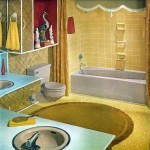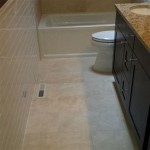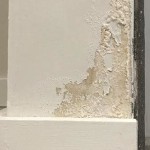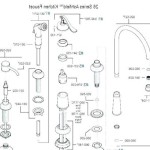Why Does My Bathroom Smell Moist?
A prevalent and often perplexing issue in many households is the persistent moist odor emanating from the bathroom. This damp, musty smell, while seemingly innocuous, can indicate underlying problems that range from simple ventilation inadequacies to more serious structural damage. Addressing this issue promptly is crucial not only for olfactory comfort but also for maintaining the overall health and hygiene of the living environment. The source of the moist smell often requires a methodical investigation, considering various potential causes and addressing them systematically.
It is important to understand that a moist smell is generally indicative of excess moisture present in the bathroom environment. Bathrooms, by their very nature, are subjected to significant humidity fluctuations due to activities like showering, bathing, and washing hands. While some moisture is expected, an inability to properly manage and dissipate this moisture leads to the development of conditions favorable for mold and mildew growth, which are primary contributors to the characteristic moist smell.
Inadequate Ventilation: The Primary Culprit
Perhaps the most common reason for a moist smell in the bathroom is inadequate ventilation. Ventilation plays a critical role in removing excess moisture from the air after showering or bathing. Without proper ventilation, humid air lingers, creating a breeding ground for mold and mildew. This is particularly true in bathrooms located in the interior of the house, which lack natural ventilation sources such as windows.
The effectiveness of bathroom ventilation fans is often overlooked. Many existing fans are either undersized for the bathroom's square footage or are simply not functioning optimally due to age, dust accumulation, or mechanical issues. A fan’s capacity is measured in cubic feet per minute (CFM), and the correct CFM rating is crucial for effective moisture removal. A general guideline is to have at least 1 CFM per square foot of bathroom space. Furthermore, the fan should be run for at least 20 minutes after showering or bathing to ensure complete moisture removal.
Another often-neglected aspect of ventilation is proper fan maintenance. Dust and debris can accumulate on the fan blades and motor, reducing its airflow capacity and overall efficiency. Regular cleaning, typically every few months, can significantly improve fan performance. Additionally, ensuring the fan exhausts to the exterior of the home is essential. Venting into the attic or another enclosed space can lead to moisture problems and structural damage.
In cases where a bathroom lacks a ventilation fan entirely, installing one is the most effective solution. If adding a new fan is not feasible due to structural limitations or cost constraints, improving natural ventilation by opening a window after showering can provide some relief. However, this method is less reliable and may not be effective in all climates or during certain seasons.
Hidden Leaks: A Silent Threat
Another major contributor to a persistent moist smell is the presence of hidden leaks. These leaks can occur in various locations, including plumbing fixtures, pipes behind walls, or around the toilet. Even small, slow leaks can introduce significant amounts of moisture into the bathroom environment over time, leading to mold and mildew growth, along with the characteristic moist odor.
Identifying hidden leaks can be challenging, as they are often not immediately visible. Common areas to inspect include under the sink, around the toilet base, and along shower or tub surrounds. Look for signs of water staining, discoloration, or peeling paint. Feeling for dampness on walls or floors can also indicate a leak behind the surface. A water meter test can help determine if there is a leak somewhere in the plumbing system. This involves turning off all water-using appliances and fixtures, then observing the water meter for any movement. If the meter continues to move, it suggests a leak within the plumbing system.
Leaks around the toilet are particularly common. A worn-out wax ring between the toilet and the flange can allow water to seep out each time the toilet is flushed. Similarly, leaky supply lines or a faulty fill valve can also contribute to water leakage. Inspecting these components regularly and replacing them as needed can prevent moisture problems.
Shower and tub surrounds are also prone to leaks, especially if the caulking or grout is cracked or damaged. Water can seep through these cracks and penetrate the wall cavities, creating a hidden source of moisture. Regular inspection and maintenance of caulking and grout are essential for preventing water intrusion. Applying a sealant to grout can help to further waterproof the surface and prevent water absorption.
Addressing leaks promptly is crucial to mitigate damage and prevent further mold growth. Repairing or replacing faulty plumbing fixtures and sealing any cracks or gaps in the shower or tub surround will eliminate the source of moisture and help to resolve the moist smell. Hiring a professional plumber may be necessary to locate and repair hidden leaks within walls or under floors.
Porous Materials and Improper Sealing: A Recipe for Moisture Retention
The materials used in bathroom construction and the quality of their sealing play a significant role in moisture management. Porous materials like certain types of tile, grout, and drywall can absorb and retain moisture, creating a damp environment that fosters mold and mildew growth. Improperly sealed surfaces further exacerbate this problem, allowing moisture to penetrate beneath the surface and create hidden pockets of dampness.
Grout, in particular, is a porous material that is susceptible to water absorption. Over time, grout can become stained and discolored, indicating the presence of mold and mildew. Sealing grout regularly with a quality grout sealer can help to prevent water absorption and minimize the risk of mold growth. Applying a sealant creates a protective barrier that repels water and prevents it from penetrating the grout lines.
Certain types of tile, especially unglazed tile, are also more porous than others. While tile itself is generally waterproof, the grout lines between tiles are often the weakest point in the system. Using a non-porous tile and ensuring that the grout lines are properly sealed can significantly reduce the risk of moisture problems.
Drywall is another material commonly used in bathrooms that is highly susceptible to moisture damage. When exposed to excessive moisture, drywall can become soft and crumbly, providing an ideal environment for mold and mildew growth. Using moisture-resistant drywall, often referred to as "green board," in bathrooms can help to mitigate this risk. Moisture-resistant drywall is treated with a special coating that makes it less susceptible to water damage.
Proper sealing around plumbing fixtures, such as sinks, toilets, and showers, is also essential for preventing water intrusion. Applying a high-quality sealant, such as silicone caulk, to all joints and seams will create a watertight barrier that prevents water from seeping behind walls or under floors. Regularly inspecting and maintaining these seals is crucial, as they can deteriorate over time and lose their effectiveness.
In addition to sealing around fixtures, it is also important to ensure that the bathroom floor is properly waterproofed. A waterproof membrane should be installed beneath the tile or flooring material to prevent water from penetrating the subfloor. This is particularly important in shower areas, where water exposure is greatest.
By selecting appropriate materials, ensuring proper sealing, and maintaining these surfaces regularly, the risk of moisture retention and subsequent mold growth can be significantly reduced, thereby minimizing the occurrence of the unpleasant moist smell.
Other Contributing Factors
While inadequate ventilation, hidden leaks, and porous materials are the primary culprits behind a moist-smelling bathroom, other factors can also contribute to the problem. These include condensation, improperly cleaned surfaces, and the presence of organic matter.
Condensation occurs when warm, moist air comes into contact with a cold surface. This process is particularly prevalent during colder months when the temperature difference between the bathroom air and the exterior walls is greatest. Condensation can lead to the formation of water droplets on walls, windows, and other surfaces, creating a damp environment that encourages mold and mildew growth. Improving insulation, using a dehumidifier, and ensuring adequate ventilation can help to reduce condensation.
Improperly cleaned surfaces can also contribute to the problem. Soap scum, body oils, and other organic matter can accumulate on bathroom surfaces, providing a food source for mold and mildew. Regular cleaning with a disinfectant cleaner can help to remove these contaminants and prevent the growth of microorganisms. Paying particular attention to areas prone to moisture accumulation, such as shower walls, tub surrounds, and sink basins, is essential.
The presence of organic matter, such as damp towels, bath mats, and potted plants, can also contribute to a moist smell. Damp fabrics provide an ideal environment for mold and mildew growth, while potted plants can trap moisture and create a humid microclimate. Ensuring that towels and bath mats are properly dried after use and avoiding overwatering plants can help to mitigate these issues. Regularly washing towels and bath mats in hot water with bleach can also help to kill any mold or mildew spores that may be present.
In some cases, the moist smell may not be directly related to the bathroom itself but rather to adjacent areas. For example, a leak in the roof or a plumbing issue in a nearby wall can introduce moisture into the bathroom environment. Thoroughly inspecting the surrounding areas for any signs of leaks or water damage is essential for identifying and addressing the source of the problem.
Addressing these additional factors, in conjunction with addressing the primary culprits, can help to create a healthier and more pleasant bathroom environment. A comprehensive approach that focuses on moisture management, proper cleaning, and regular maintenance is essential for preventing the recurrence of the unpleasant moist smell.

Why Does My Bathroom Smell Like Mildew Bioclean Remediation Llc

My Bathroom Smells Like A Sewer What Causes That And How Do You Fix It Kitchen Infinity

How To Eliminate Smell From Bathroom 10 Simple Ways

Why Does My Bathroom Smell Musty Hunker

Why Does My Shower Drain Smell Bad Kay Plumbing Heating And Cooling

New Bathroom Smells Musty Causes And Solutions

Why Does My Toilet Smell Of Urine Despite Cleaning It Maid2match

Solved Why Does My Bathroom Smell Like Urine Even After Cleaning Fomin Soap

10 Ways To Get Rid Of Musty Smells In Your Bathroom Mca

My Bathroom Smells Like A Sewer What Causes That And How Do You Fix It Kitchen Infinity
Related Posts







